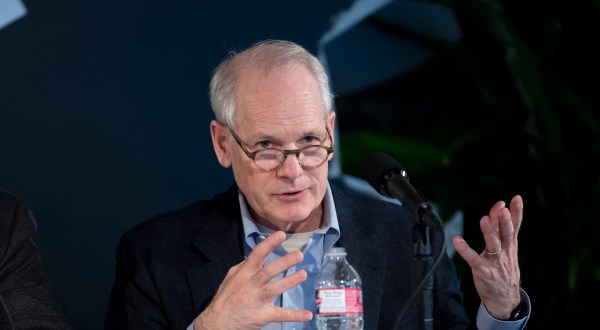Pentagon awards massive electronic health record contract

The Defense Department late Wednesday awarded Reston, Virginia-based Leidos Inc. a 10-year, $4.3 billion deal to begin work on the first phase of the largest government health information technology contract since the troubled rollout of Healthcare.gov.
Pentagon officials briefed reporters just hours before the department announced the contract for the Defense Healthcare Management System Modernization program, which could be worth up to $10 billion over 18 years. Deployment of the new electronic health record system to up to eight initial operation and testing sites is scheduled to begin by the end of 2016.
Leidos, which partnered with EHR developer Cerner and Accenture Federal, prevailed against two other bids offered by IBM, which teamed with Epic Systems, and Computer Sciences Corp., which teamed with HP and EHR developer Allscripts. Leidos’ Health division comprises the companies formerly known as SAIC, Vitalize Consulting Solutions and maxIT Healthcare.
Two years in the making, the contract is “an important step in the acquisition of modern health care in DOD,” Undersecretary of Defense for Acquisition, Technology and Logistics Frank Kendall said in a briefing with reporters. “I have spent more time on this program than any other DOD program, including the F-35 fighter.”
The contract award marks the beginning of a major shift toward commercial software for the Pentagon’s global electronic health record system. It comes after years of struggles to devise a joint system with the Department of Veterans Affairs that ultimately failed due to a combination of bureaucratic turf battles, differing business processes and cost projections surpassing $25 billion.
Christopher Miller, the Pentagon’s program executive officer overseeing the contract, said the selection of Leidos out of an initial pool of six offerers was based on the maturity of the company’s software and the proposed technical architecture.
“Today is just the beginning,” Miller said. “We understand that the hard part is just now going to start. From a program office perspective, our focus is now really shifting toward testing. What you’re going to see over the next few months is an incredible test regime. We’re going to be digging deep into security, we’re going to be really looking at interoperability both with the VA and the private sector, [and] we’re going to have a lot of functional people involved to make sure the workflows they are looking for are delivered,” he said.
Full scale deployment will be a “massive” undertaking, requiring up to seven years to deploy the software to 1,000 sites in support of 9.5 million users. But the system must first get through extensive testing at eight facilities in the Pacific Northwest. After initial testing, the sites will go through extensive user training and begin the technical transition from the old system to the new system. Final operational testing will then ensure the system is reliable and suitable in a realistic environment.
Kendall also emphasized that testing will focus heavily on cybersecurity, which has garnered significant attention at the highest levels of government in the aftermath of several data breaches at major private health care providers as well as the Office of Personnel Management. “We’re going to be scanning all of the code, for example. That’s something that’s not normally done by a commercial buyer,” Kendall said.
Each vendor was required to certify to the department that they scan their software for vulnerabilities and then report all of those vulnerabilities to the Pentagon. “This was an explicit requirement in the request for proposals that was closely evaluated and we have spent a lot of time with the vendors well before” the OPM hack, Miller said.

(iStockphoto)
Pentagon officials insisted that interoperable data standards — a major issue for many critics of the department’s decision not to work with the VA on its EHR, known as the Veterans Health Information Systems and Technology Architecture, or VistA — are a central focus of the Leidos contract moving forward.
Lawmakers on Capitol Hill have been critical of DOD’s and VA’s inability to provide end-to-end EHR interoperability from the time a person joins the military to the time he or she leave the service and requires veterans care. Between 2011 and 2013 alone, they spent more than half a billion dollars on a failed effort to develop a new joint-integrated EHR.
One of the things that will be monitored over the life of the contract is how well the vendor adheres to the national data standards required by the Office of the National Coordinator for Health Information Technology within the Department of Health and Human Services.
“We share more information between the DOD and the VA than any other two large health systems in the world,” Miller said, responding to FedScoop’s questions about long-term interoperability with VA. “I can take any provider today and put them in front of a computer anywhere and I can pull up the entire longitudinal health record between the DOD and a veteran. It is possible and we do it everyday,” he said.
“DOD and VA are interoperable today,” Kendall said. “We send over a million pieces of data per day. We are well into fielding a joint legacy viewer in the VA to view DOD records and vice-versa. So we have interoperability and we’re going to be certifying that to the Congress.”
Dr. Jonathan Woodson, the assistant secretary of defense for health affairs, said the Pentagon’s decision to acquire a commercial EHR system was based on the lessons learned from other large health providers that had initially developed their own homegrown system, the same way VA developed VistA.
“During this process, we’ve gone out to many health systems that previously had homegrown systems and learned the lessons as they transitioned from homegrown systems to commercial products and why they made those decisions,” Woodson said. Moving to a commercial system makes DOD “better, stronger and more relevant.”




